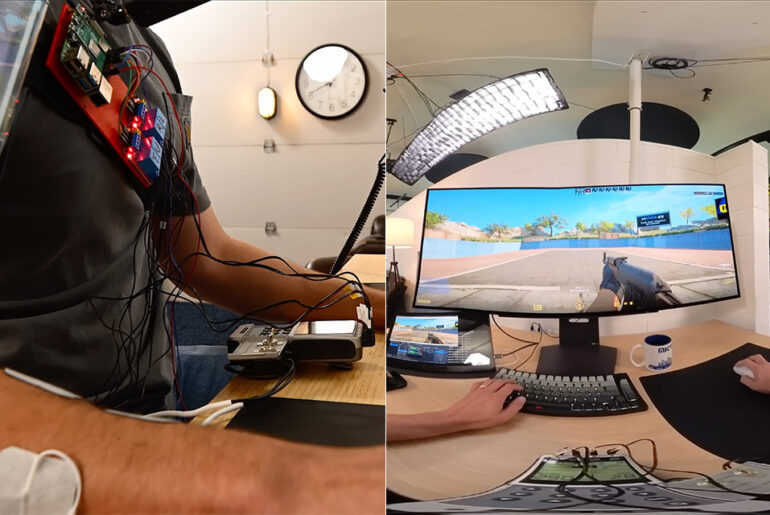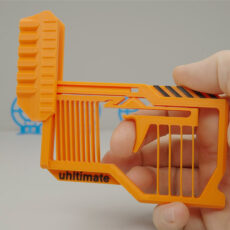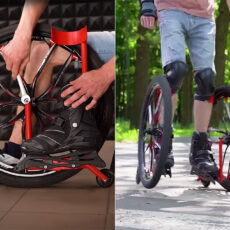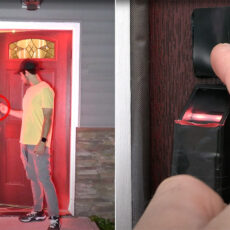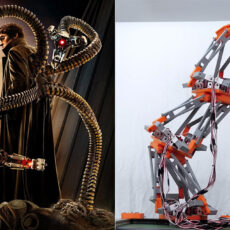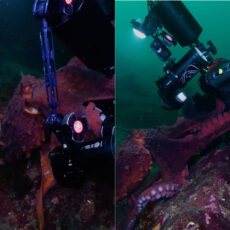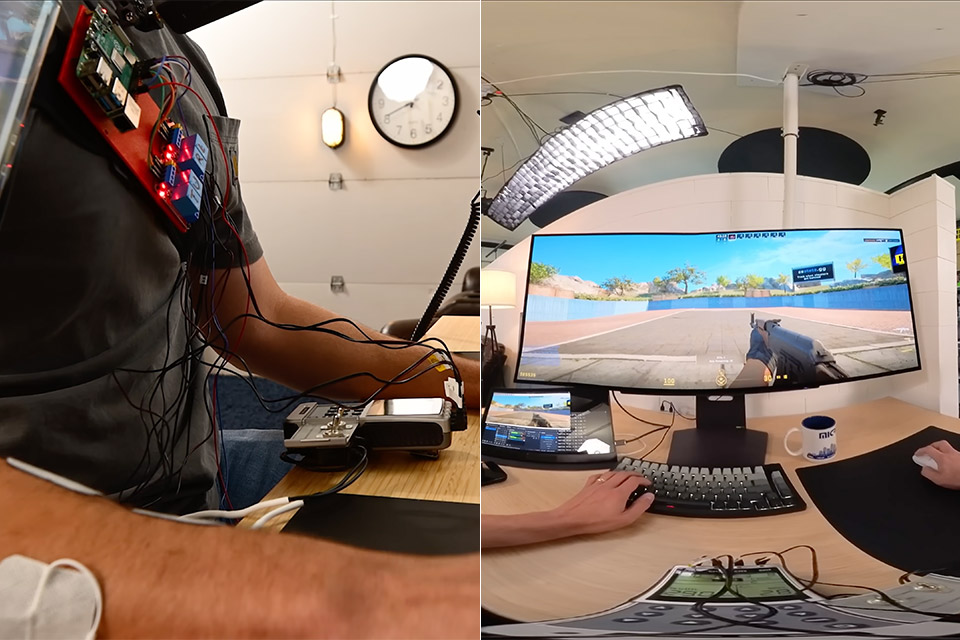
Inventor Nicholas, the mastermind behind the YouTube channel Basically Homeless, unveils his latest project, a neuromuscular aim-assist system that involves wiring his arm to a computer that shocks his muscles into action. This setup basically makes his hand snap to targets in milliseconds, rivaling the reaction times of professional gamers.
Nicholas’s journey started with a sobering realization: at 30, his reaction times were slowing down. The average human takes around 200ms to respond to a visual stimulus, but elite gamers, those “cracked out young chaps” as he calls them, can hit 150ms or lower. Determined to outpace them, Nicholas wondered if a computer could send those signals instead, faster and more precise? With that idea, he set out to build a system that would make his arm an extension of a machine, capable of superhuman speed.
- Transform your reality with Meta Quest 3S 128GB. Now get the Amazon-exclusive Cardboard Hero Bundle, which includes the Handiwork Helmet, Handiwork...
- Turn any room into your own personal theater. Dim the space around you and watch on a giant, vibrant screen. Go all in with USB-C headphones, or plug...
- Have more fun with friends in Quest. Whether you’re stepping into an immersive game with people from around the world, watching a live concert...
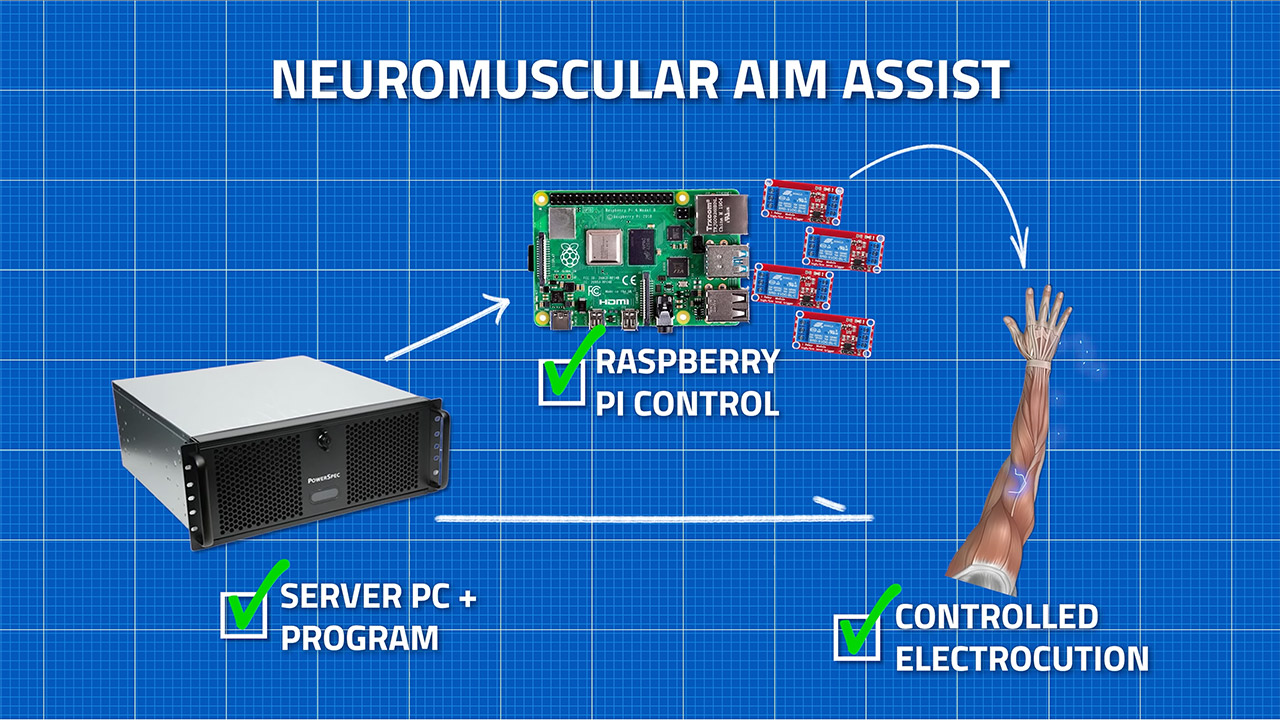
At the heart of the setup is a PC running a YOLO (You Only Look Once) computer vision model, trained specifically for Counter-Strike 2 gameplay. This software scans the game feed in real time, detects human-shaped figures on the screen. When it sees an enemy, it calculates their position relative to the crosshair and sends a command to a Raspberry Pi. This tiny single-board computer acts as the middleman, controlling four relays that toggle an EMS (electromyostimulation) or TENS (transcutaneous electrical nerve stimulation) unit. This device sends precise electric pulses to electrodes on Nicholas’s arm, making his muscles contract and move his hand to the target. For extra flair, he even wired a “neuromuscular triggerbot” to shock his trigger finger when the crosshair aligns with an enemy’s head.
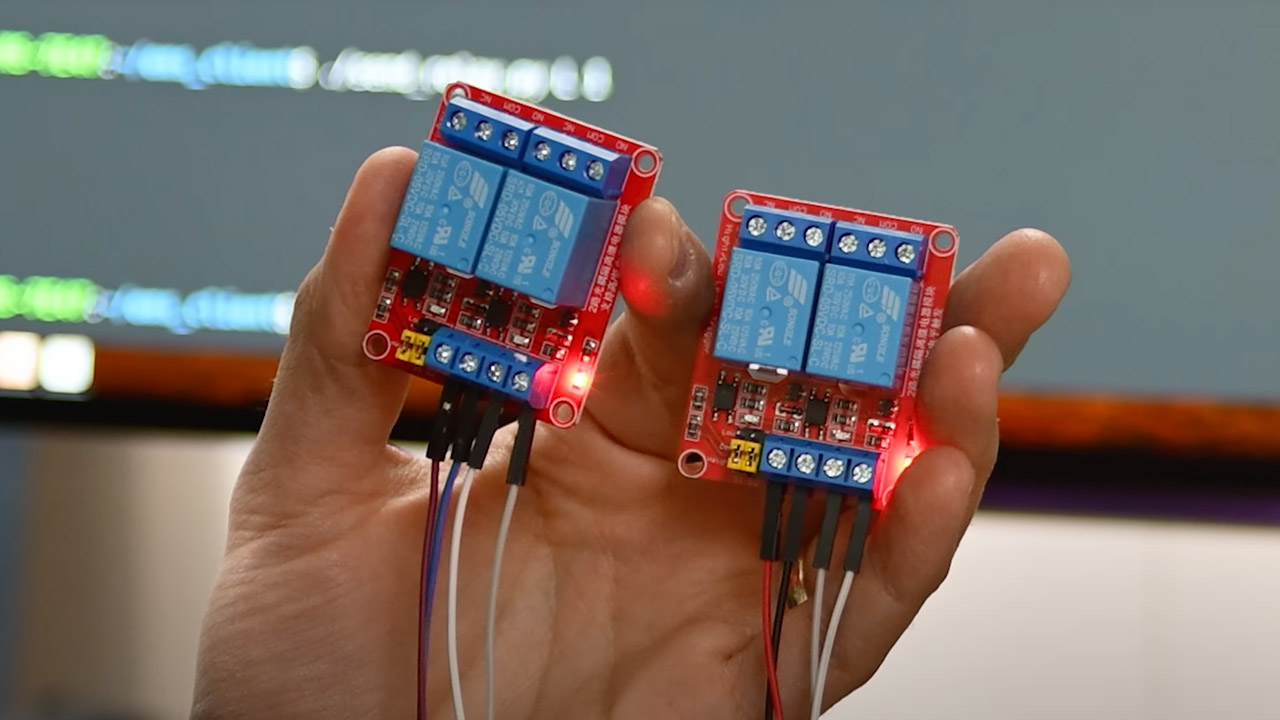
He started by setting up the Raspberry Pi to control the relays over Wi-Fi so they could open and close circuits to activate the EMS unit. The electrodes had to be placed just right—near the nerves entering specific muscles and along the muscle fibers themselves—to get the desired movement. Testing this required trial and error, with Nicholas and a willing volunteer (his girlfriend’s little brother) getting shocked to figure out the right muscle groups. It wasn’t pretty. Nicholas describes the sensation as “tingly” and “unpleasant”, like someone grabbing his arm. At one point he handed a friend the switch to test the setup, which he later called “one of my dumber decisions” as the shocks caught him off guard.
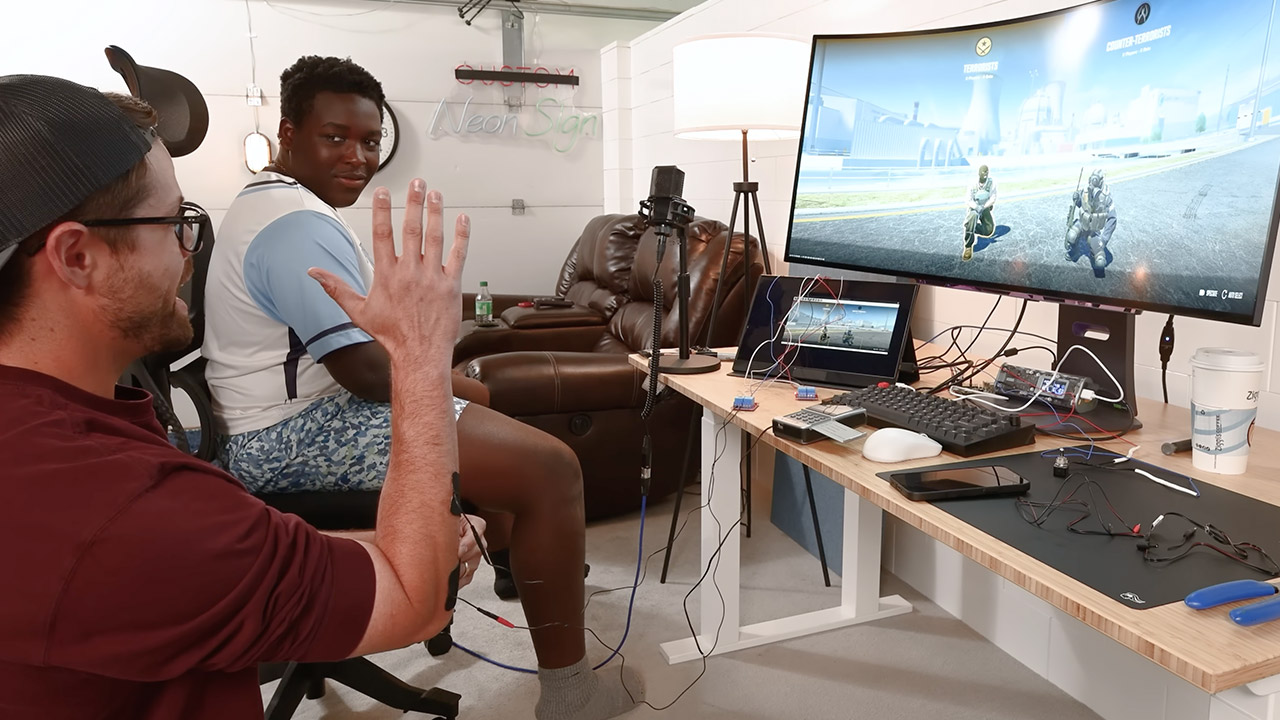
The first tests were a mix of success and chaos, because in a controlled environment, the system worked as intended: the computer detected an enemy, the Raspberry Pi fired the relays and Nicholas’s arm jerked towards the target in under 100ms – half his natural reaction time and faster than many pros. High speed footage confirmed the relays actuating and his arm moving almost instantly. However, the shocks were disorienting and he missed shots and in his words “freaked out like time-traveling Napoleon Dynamite”. The EMS unit was causing pain and his tensed muscles were resisting the contractions like leaning into a push. The results showed fast reactions but terrible accuracy.
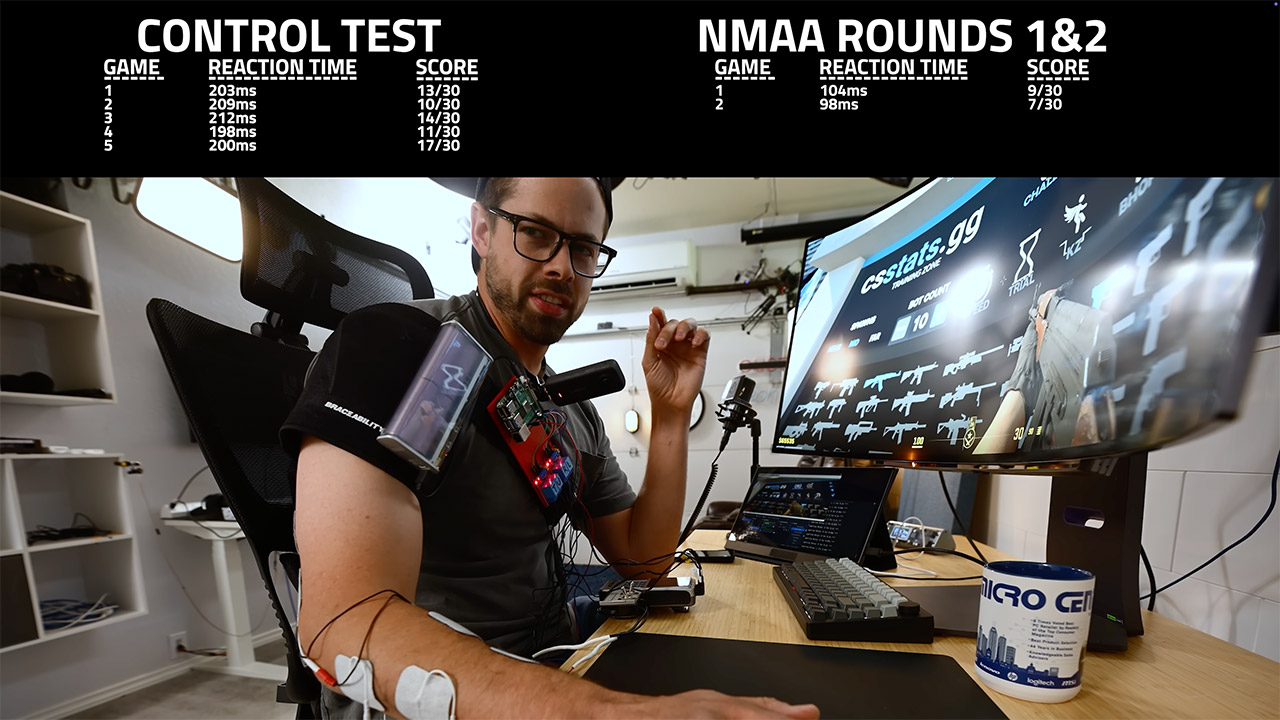
One issue was latency, as the Raspberry Pi was taking 100ms to respond negating the speed advantage. So, he upgraded to a high powered PC with a 9950X3D processor and plenty of RAM and the delays disappeared. Another problem was in multiplayer matches where the system needed to distinguish teammates from enemies to avoid constant shocks. His first attempt – searching for nameplates above teammates’ heads – slowed the program to a crawl. A color based approach – differentiating team uniforms – was inconsistent. Finally, he switched to a pre-trained YOLO model designed for Counter-Strike 2 built by others (ironically cheaters) to identify game characters accurately. This solved the problem and the system only shocked his arm for enemies.
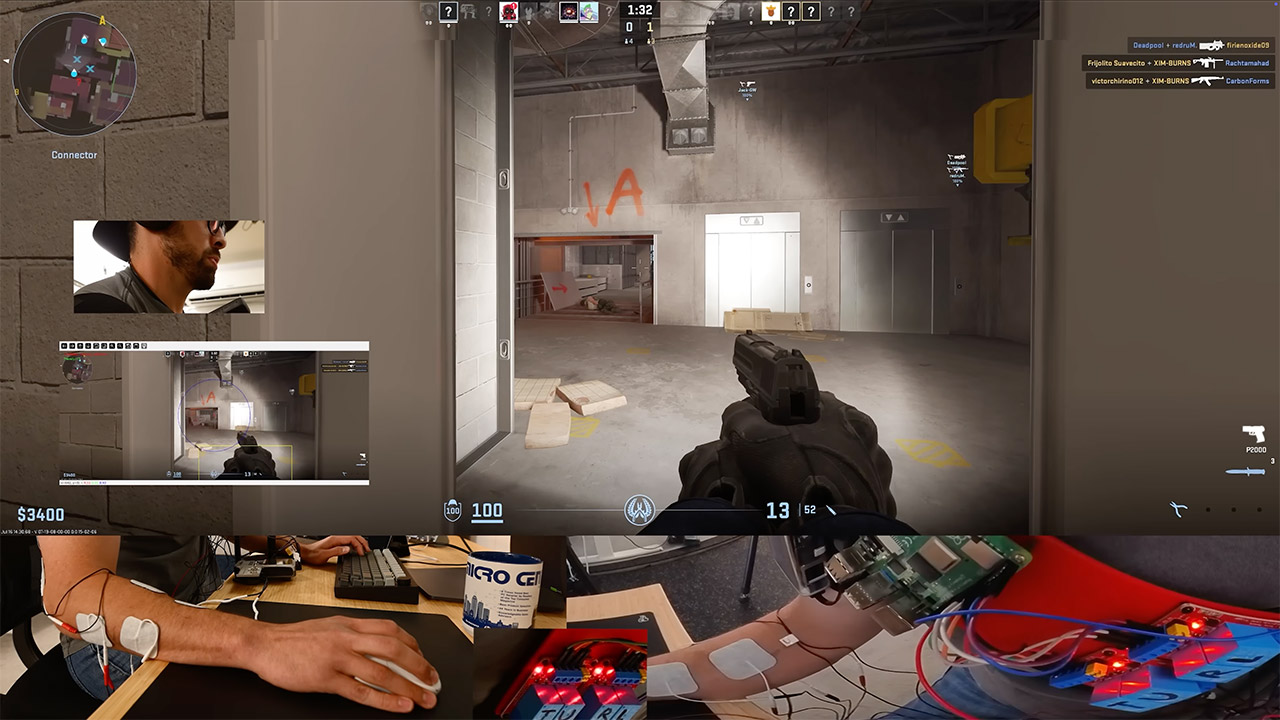
Last, but not least, in test modes, Nicholas knew an enemy would appear every 2 seconds and he would tense up, resisting the shocks. Multiplayer matchmaking, with its unpredictable pace, forced him to relax and the system worked better. He also learned to keep his trigger finger limp and let the neuromuscular triggerbot fire with precision. In these moments the setup shone. During one match the system spotted an enemy before he did and jerked his arm to aim and fired a shot in a blur. “It worked” he said. “That’s sick”. Teammates were equally stunned calling it “wild” and “like living in the future”.
Is it cheating? Nicholas says no, it’s his muscles doing the work, not software altering the game. His friends are amused by the sheer audacity and agree it’s a gray area. The system isn’t perfect – occasional misfires moved his arm towards teammates and the pain was still a distraction. But when it worked it felt like the computer had taken over his body and was delivering shots he barely registered making. With solid-state relays, Ethernet connections and more precise electrodes he thinks sub 50ms reactions are possible and he could aim directly at an enemy’s head.
[Source]

